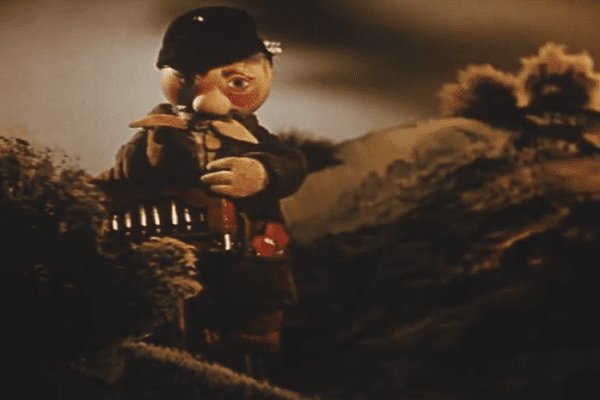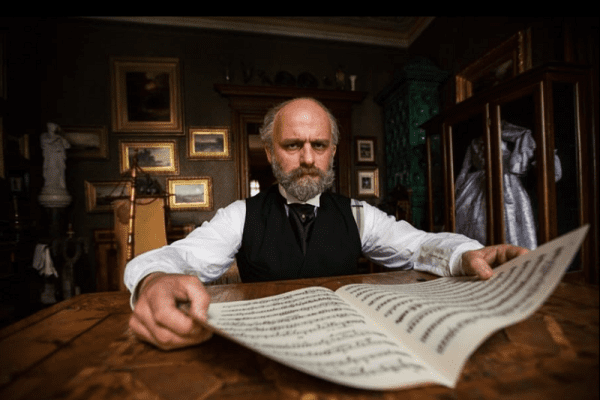Czechoslovakian Filmmakers: A Legacy of Innovative Storytelling and Cinematic Excellence
(*Please give the page a few moments to load the videos fully.) Czechoslovakia was known for its rich cultural heritage and artistic traditions, and its film industry was no exception. From the late 19th century until its dissolution in 1993, Czechoslovakia produced several talented and influential filmmakers who left an indelible mark on the world of cinema. Today, we will explore the contributions of these visionary artists, who, through their work, helped to shape the art of filmmaking and create a legacy of imaginative storytelling that continues to inspire and captivate audiences around the world.
Early Pioneers
The roots of Czechoslovakia’s film industry can be traced back to the late 19th century when an early pioneer such as Jan Kříženecký began experimenting with the new medium of motion pictures. These early filmmakers sought to capture the essence of their country and its people, and their work laid the foundation for the film industry that would emerge in the decades to come.
Jan Kříženecký was born as the fourth child in the family of Prague municipal official Norbert Kříženecký and his wife Johanna, née Švehlá from Split. Unlike his older brother, Rudolf Kříženecký (1861–1939), he did not study architecture at the Czech Technical University in Prague. After his studies, he became an auditor of the building office of the city of Prague. Thanks to his fondness for photography, he was asked by the city archive for photo documentation of old and historically valuable houses, streets, and other monuments for their inventory before liquidation as part of the rehabilitation of old Prague. In total, he took about four thousand photographs of old Prague in the years 1902–1915. He was a member of the Club of Amateur Photographers in Prague. At the 1897 exhibition of amateur photographers, his pictures of the statues from the Charles Bridge stood out as photos of buildings from other Czech cities.
When, in December 1896, he saw a film production from the workshop of the Lumière brothers at the U saského dvor inn in Hybernská street in Prague, he was won over to the new art. He began to study the cinematography technique first theoretically based on articles in the foreign press. In 1898, he received a cinematograph and six reels of unexposed film from the Lumière brothers in France. At that time, he participated in preparing the Architecture and Engineering Exhibition of the Association of Architects and Engineers in Prague and decided to revive it with “moving pictures”. With his former classmate Josef František Pokorný, who could be called the first producer, got enough money to run a cinema on loan from his father, a factory worker. They managed to pay off the debt through the operation, but the overall earnings were not very bright. Pokorný also often organized screenings and screening locations. All the first films were uniformly shorted seventeen meters and were shot with a still camera. At first, Kříženecký sent the negatives to Lyon, and later he developed them himself. He had to develop the first films in a bathtub and dry them in the wind on a rack.
On June 19, 1898, Kříženecký was already able to show his first films at the exhibition of architecture and engineering at the Prague exhibition center in Stromovka. In a simple wooden shed, called the Czech cinema, because of the national concept of the entire exhibition, spectators saw the first shots from the life of Prague and the exhibition grounds including Purkyňovo náměstí in Královské Vinohrady, a noon shot of a cannon on the Bastion of St. Thomas, and St. John’s Pilgrimage in a Czechoslovakian village. The first film showed footage of the hustle and bustle at today’s Míru Square, the second a time signal of the time – a shot from a cannon on the Prague walls, and the third directly happening on the exhibition ground. Due to the success of these films, other documentaries followed.
The following compilation of shorts introduces some of the earliest films made in the Czech lands, shot by Jan Kříženecký from 1898 to 1911. The digitized original negatives and vintage prints allow us to see their diversity and material beauty.
Interwar Period
The interwar period marked a major turning point in the development of Czechoslovakia’s film industry, as a new generation of filmmakers came of age and began to make their mark. The political and cultural changes inspired these artists in their country, and they sought to use their films to address the challenges and issues of the day.
One of the most notable filmmakers of this era was Karel Lamač, who was known for his innovative and experimental approach to storytelling. His film “The Fabulous Baron Munchausen” (1918) was a landmark in the development of Czechoslovakia’s film industry, and it remains an enduring masterpiece of silent cinema.
Karel Lamač (1897 – 1952) was a Czech film director, actor, screenwriter, producer and singer. He directed more than 100 films in Czechoslovakia, Austria, Germany, the Netherlands and the United Kingdom. He was known for his experimental and avant-garde film style, which often pushed the boundaries of traditional storytelling and cinematography. Lamač’s works were highly influential in the development of the Czech New Wave movement and are still widely regarded as masterpieces of the art form. Despite facing censorship and other challenges throughout his career, Lamač remained steadfast in his commitment to pushing the boundaries of cinema and was highly respected by his peers and audiences alike. Today, his legacy continues to inspire new generations of filmmakers and artists.
Another important figure of this era was Hugo Haas, who was known for his daring and provocative films that explored taboo subjects and pushed the boundaries of what was acceptable in the conservative cultural climate of the time. His films, such as “The Wheel of Life” (1939) and “Love in a Hot Climate” (1947), were both critical and commercial successes, and they helped to establish Haas as one of the most important filmmakers of his generation.
Hugo Haas was a Czech film maker, actor and director born in 1901. He was a prolific filmmaker in the Czechoslovakia of the 1920s and 1930s, making numerous films in a variety of genres, including comedies, dramas and melodramas. Haas was known for his comedic acting style, which often included elements of slapstick and physical humor. He was also a pioneer of the sound film era in Czechoslovakia, and many of his films were among the first to feature synchronized sound. Despite facing censorship and other challenges during the Nazi occupation of Czechoslovakia, Haas continued to make films until his death in 1968.
In the USA, he began his new career as an announcer on US broadcasts and as a narrator of propaganda films. After the war, Haas resumed his acting career, taking on roles as a seedy villain in lavish costumes, often with a thick accent. With the money he made, Haas financed his own independent films in the 1950s, exercising complete creative control with a Svengali-like approach. Despite his portly appearance and bohemian style, Haas was a major force in the Czech film industry.
Hugo Haas had plans to return to his home country in 1968, but the Russian takeover prevented this. The state of his country deeply affected Haas and he became disheartened and depressed. This, combined with his asthmatic condition, ultimately led to his death from heart failure. Haas was a proud Czech and had a deep love for his homeland, making his passing a great loss for the film industry.
Today, his films are still widely regarded as classic examples of Czech cinema, and his influence on the film industry continues to be felt.
Communist Era
The Communist era marked a new phase in the development of Czechoslovakia’s film industry, as the government began to exert greater control over the production and distribution of films. Despite this, several talented and innovative filmmakers made their mark during this period. Their work remains some of the most memorable and enduring films in the history of Czechoslovakia’s film industry.
One of the most notable filmmakers of this era was Ján Kadár, who was known for his compelling and thought-provoking films that explored the human condition and the complexities of life under Communist rule. His film “The Shop on Main Street” (1965) was a major international success, and it won the Academy Award for Best Foreign Language Film.
Ján Kadár was a Czech film maker born in 1913. He was known for his collaborative work with director Elmar Klos on a series of highly influential and award-winning films, including “Obchod na korze”.
Kadár was a master of the art of storytelling and was known for his ability to create compelling, emotionally rich stories that often dealt with themes of social and political injustice. His works were highly regarded during his lifetime and have since become seminal examples of Czech and world cinema.
Despite facing censorship and other challenges throughout his career, Kadár remained dedicated to his craft and was highly respected by his peers and audiences alike. Today, his legacy continues to inspire new generations of filmmakers and artists.
Karel Zeman: Known as the “Czech Georges Méliès,” Karel Zeman was a pioneer in the field of special effects. He combined live action and animation to create unique and imaginative films, including “The Fabulous Baron Munchausen” and “The Stolen Airship.”
Karel Zeman was a Czech film maker and animator born in 1910. He was a pioneering figure in the field of animation and is best known for his imaginative and innovative films, including “The Fabulous Baron Munchausen” and “Journey to the Beginning of Time”. Zeman was a visionary who was ahead of his time in his approach to animation and filmmaking. He was known for his ability to bring fantastical and imaginative worlds to life, often through the use of multiple animation techniques, special effects and live-action elements.
His works have been widely recognized and have received numerous awards and accolades both in his native Czech Republic and internationally. Today, Zeman is widely regarded as one of the greatest animators of the 20th century and his legacy continues to inspire new generations of filmmakers and animators.
Another important figure of this era was Milos Forman, who was known for his masterful and insightful films that explored the human experience and the complexities of life in Communist Czechoslovakia. His films, such as “Loves of a Blonde” (1965) and “The Fireman’s Ball” (1967), were critical and commercial successes, and they helped to establish Forman as one of the most important filmmakers of his generation.
Milos Forman was a Czech-American filmmaker born in 1932. He was one of the leading figures of the Czech New Wave movement and is best known for his later (made in the USA) critically acclaimed films, including “One Flew Over the Cuckoo’s Nest”, “Amadeus,” and “The People vs. Larry Flynt”.
Forman was a master storyteller who was known for his ability to bring complex, human characters to life on the screen. He was also highly regarded for his technical prowess and visual style, often featuring bold, experimental techniques. Despite facing censorship and other challenges throughout his career, Forman remained steadfast in his commitment to making thought-provoking, socially relevant films that would challenge audiences and spark important conversations.
Today, he is widely regarded as one of the greatest filmmakers of his generation and his legacy continues to inspire new generations of artists and filmmakers.
Ivan Passer: Ivan Passer was another prominent figure in the Czech New Wave movement. His films, such as “Intimate Lighting” and “Born to Win,” were known for their exploration of human relationships and the search for meaning in life.
Ivan Passer is a Czech film maker born in 1933. He is best known for his contributions to the Czech New Wave movement, as well as his later works in the United States. Passer started his career in his native Czech Republic, working as a screenwriter and director during the height of the Czech New Wave in the 1960s. He was known for his ability to create films that were both thought-provoking and emotionally resonant, often dealing with social and political issues of the day. After the Soviet invasion of Czechoslovakia in 1968, Passer immigrated to the United States, where he continued his career as a filmmaker and director. In America, he worked on a number of successful films, including “Born to Win” and “Cutting Class”.
Today, Passer is widely regarded as one of the most talented and influential filmmakers of his generation and his legacy continues to inspire new generations of filmmakers and artists.
Post-Communist Era
After the fall of Communism in Czechoslovakia in 1989, the country underwent a major cultural transformation, and the film industry was no exception. The film industry was among the first to feel the effects of the country’s new freedom, as filmmakers were no longer constrained by Communist censorship and could now express themselves freely by exploring new themes and styles. This newfound artistic freedom brought about a new wave of creativity and experimentation in Czechoslovakian cinema.
The post-Communist era saw a significant increase in the number of filmmakers, as well as a diversification of the types of films being produced. Prior to the fall of Communism, the film industry was dominated by state-sponsored propaganda films and a limited number of official filmmakers. After the Velvet Revolution, however, a new generation of filmmakers emerged, and their works reflected the complexities and contradictions of the rapidly changing society.
One of the most notable filmmakers of the post-Communist era was Jan Švankmajer, whose unique style of surrealism and stop-motion animation quickly gained recognition and critical acclaim both in the Czech Republic and abroad.
In the 1990s, the Czech Republic saw a surge of independent filmmaking, as filmmakers explored new themes and forms, and pushed the boundaries of traditional cinema. The country’s film schools produced a new generation of filmmakers who went on to make their own mark on the industry. Some of the most notable filmmakers of this era include Věra Chytilová, Jiří Menzel, and Jiří Barta.
Věra Chytilová was a Czech film maker born in 1929. She was a pioneering figure in the Czech New Wave movement and is best known for her bold, experimental films, including “Daisies” and “Fruit of Paradise”. Chytilová was known for her unique and challenging approach to storytelling, often using unconventional narrative structures, visual styles and themes to create films that were both thought-provoking and aesthetically innovative. Despite facing censorship and other challenges throughout her career, Chytilová remained dedicated to pushing the boundaries of the art form and was highly respected by her peers and audiences alike. Today, her legacy continues to inspire new generations of filmmakers and artists and she is widely regarded as one of the greatest female filmmakers of all time.
Jiří Menzel was a Czech film maker born in 1938. He was a leading figure of the Czech New Wave movement and is best known for his critically acclaimed films, including “Closely Watched Trains” and “Larks on a String”. Menzel was a master of the art of storytelling and was known for his ability to create charming, light-hearted films that often dealt with serious social and political issues. His works were highly regarded during his lifetime and have since become seminal examples of Czech and world cinema. Despite facing censorship and other challenges throughout his career, Menzel remained dedicated to his craft and was highly respected by his peers and audiences alike. Today, his legacy continues to inspire new generations of filmmakers and artists.
Jiří Barta is a Czech film maker and animator born in 1948. He is best known for his innovative stop-motion animation films and his contributions to the field of animation. Barta is a master of his craft, known for his ability to bring fantastical and imaginative worlds to life through his intricate and detailed stop-motion animation techniques. His works have been widely recognized and have received numerous awards and accolades both in his native Czech Republic and internationally. Barta is also highly regarded for his unique style and imaginative vision, which has earned him a reputation as one of the most innovative and talented animators of his generation. Today, his legacy continues to inspire new generations of animators and filmmakers.
Of course, this is just a minuscule sample of the filmmaking talents from the Czech lands. And as you know, we regularly feature posts about Czech cinema and film. You can visit our film archives by clicking here.
The Czech film industry continues to thrive, and filmmakers are exploring new themes and styles, pushing the boundaries of traditional cinema, and reaching new audiences domestically and internationally. The Czech Republic has become a hub for film production and continues to play an important role in shaping the future of international cinema.
We hope you enjoyed today’s post!
Thank you in advance for your support…
You could spend hours, days, weeks, and months finding some of this information. On this website, we curate the best of what we find for you and place it easily and conveniently into one place. Please take a moment today to recognize our efforts and make a donation towards the operational costs of this site – your support keeps the site alive and keeps us searching for the best of our heritage to bring to you.
Remember, we rely solely on your donations to keep the project going.
We appreciate you more than you know!
If you have not already subscribed to get TresBohemes.com delivered to your inbox, please use the form below now so you never miss another post.





















